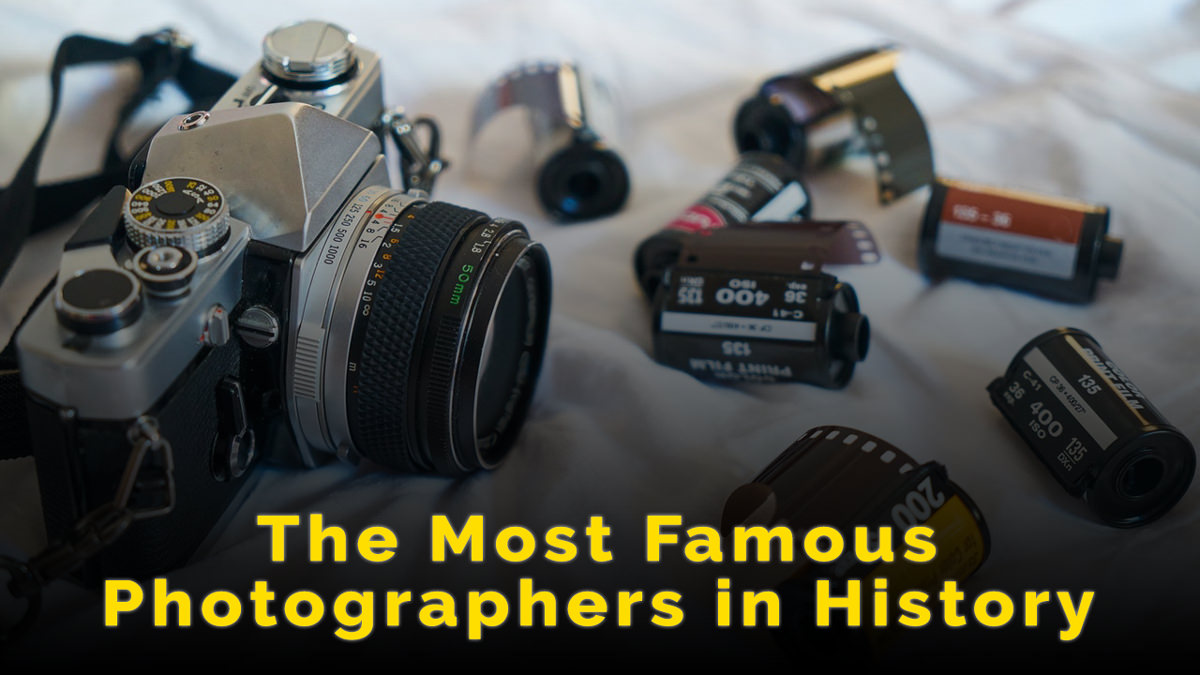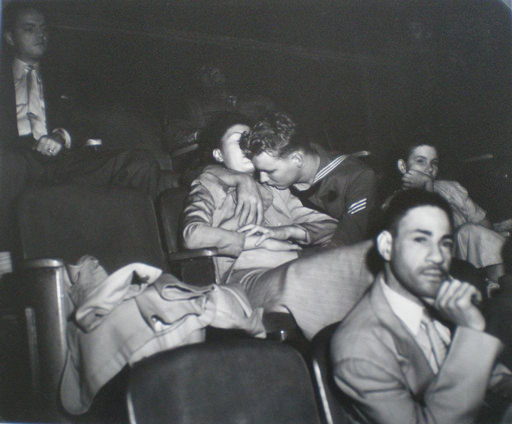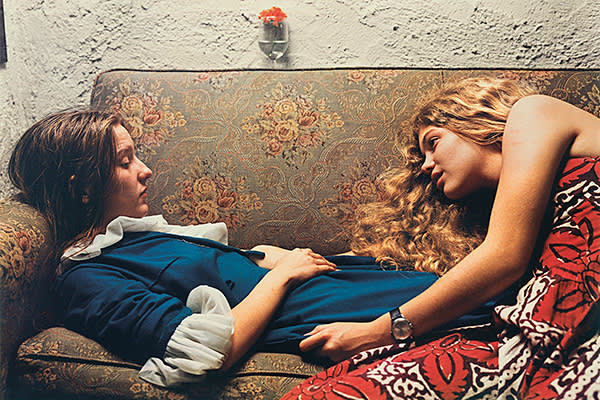Last updated on September 5th, 2021
Creativity is intelligence having fun.
– Albert Einstein
While sparks of creativity can naturally strike anyone, at any time, photography is also an acquired skill. Almost all photographers learn the art of picking out compositions with the perfect settings after years of practice. And one constant during these years of combining skill and one’s own natural perspective in photography is inspiration.
Picking up your camera and finally going on that hike you’ve been planning is an amazing feeling. Being inspired enough to do that regularly is even better.
This is why today we’ll be learning a bit about some of the most famous photographers in history, who can provide you with the inspiration you need to let your sparks of creativity glow!
Famous Photographers
These interesting photographers are in alphabetical order. Every photographer and photograph resonates differently to each viewer. This helps avoid the subjectivity of deciding who’s the best photographer.
Pin for Later

1. André Kertész
Born in 1894 in Budapest as Andor, Kertész rose to become one of the leaders of photojournalism. Coming from a Jewish middle-class family, he was expected to get into business and become a stockbroker like his elder brother.
In 1914, a young André Kertész was called to serve in World War I, where he used a lightweight film camera to take photos of the battlefield. In 1926, he left for Paris — a second home for budding artists of those times — where he decided to change his first name to André. It was in Paris, 1928, where he captured The Fork, one his most famous images, complete with a simple composition he would soon become known for.
He worked for a number of years as a freelance photographer for magazines like Vu, Frankfurter Illustrierte, and The Times of London, before moving to the United States in 1936.
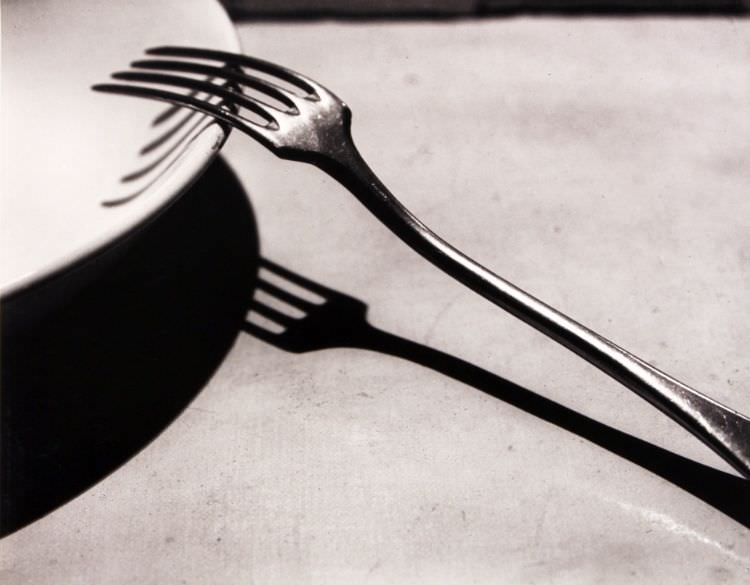
Famous For
Kertész has come to be known for his minimal, abstract images, often depicting daily objects and the usual life of people. He has also contributed significantly to photojournalism and the photo essay, with his photographs providing an insight into the real condition of his subjects. Although sadly, as he himself often remarked, he never received the recognition he deserved, with majority of the appreciation for his work coming after his death in 1985.
2. Andreas Gursky
Jumping forward to the modern time, we meet Andreas Gursky. Born on January 15th, 1955, Gursky is a German large-format photographer and a professor at the German Arts Academy. Having received his early training from the legendary photographic couple Hilla and Bernd Becher, who are known for their industrial architecture images, Andreas Gursky has become a great contributor to their Düsseldorf School of photography.
Gursky did not use digital post-processing in his early work. However, since the 90s, he has used digital manipulation to increase the sense of scale in his images and create highly detailed shots. His images are often shot from a high vantage point, giving an elevated point of view and letting the audience observe what they would otherwise never see.

Famous For
In 2011, Rhine II, one of the images from his 1999 photo series of the river Rhine, set a record as the most expensive photograph ever sold. The price? A whopping $4.3 million.
3. Annie Leibovitz
Annie Leibovitz is an icon for portrait photographers all over the world. Also known as Anna-Lou, this American portrait photographer was born on October 2nd, 1949. Her inspiration for learning painting and photography has been her own mother, a dance instructor. Although she attended college to study painting, a photography workshop prompted her to change her major, and she started her journey as a staff photographer for Rolling Stone magazine in the 1970s.
In 1973, Annie was named the chief photographer for Rolling Stone, becoming the first woman to hold that position, and captured some of the most iconic celebrity portraits of that era. She is known for her high contrast images with dramatic poses, emphasizing the body and expressions of her subject.

Famous For
In December 1980, Annie Leibovitz had a photo shoot with John Lennon and his wife Yoko Ono. Lennon was shot and killed five hours later, making Annie the last person to have taken his portrait. She also has the distinction of being declared as one of the Living Legends of American culture by the Library of Congress.
4. Ansel Adams
No list of great photographers is complete without the name of Ansel Adams, perhaps the most iconic landscape photographer of the 20th century. Born on February 20th, 1902, in California, Adams’ photographic journey started at the early age of 14, when he was given his first camera on a family trip to Yosemite National Park.
During his late teenage years, he developed his skills while working as a caretaker for the Sierra Club in Yosemite. In the 1930s, Adams became one of the founders of Group f/64, an association of photographers who favored straight photography, where dynamic range and sharp focus were emphasized over artistic effects like soft-focus, oil painting, etc. He went on to create the Zone System, a highly technical method of evaluating exposure and printing.
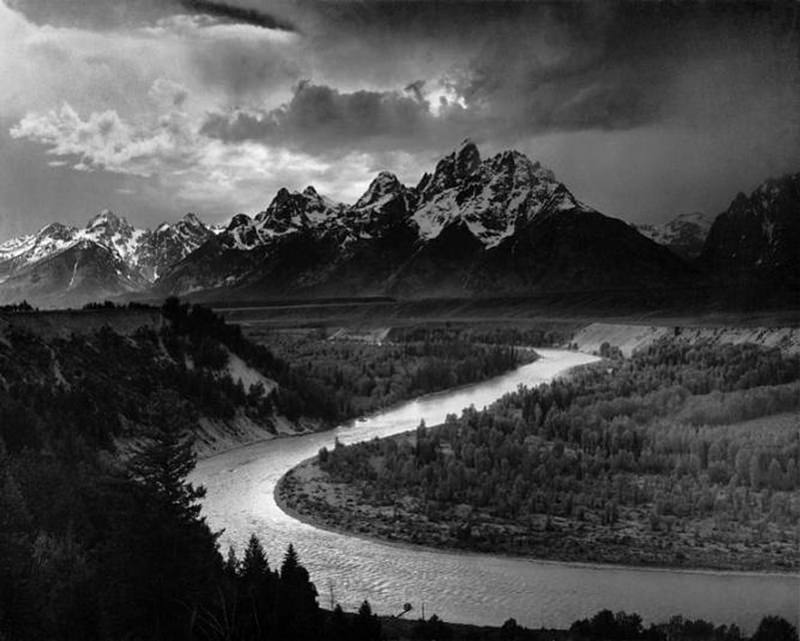
Famous For
Ansel Adams is best known for his grand black and white landscape images, which he used to convey the message of environment protection. His detailed shots of the American West regions demonstrate his deep understanding of not just light and camera settings, but also of the importance of the perfect location. Adams’ work makes him one of the most interesting photographers.
5. Brassaï
Gyula Halasz was born in 1899 in the town of Brasso — which now falls in Romania — and which later became the source of his pseudonym Brassaï, meaning from Brasso.
Like countless other artists, Brassaï moved to Paris in the 1920s, and found a job as a journalist for Hungarian newspapers. He initially pursued photography only to make some extra money, although wandering the streets of Paris at night with his camera soon became his actual profession. In fact, in 1933, he published his seminal book Paris by Night, which included 64 images, many of which led him to international fame.

Famous For
Brassaï’s images are known for depicting the lesser-known shades of Paris, covering subjects like street cleaners, prostitutes and stray animals. However, he ventured into commercial photography later in his career, photographing personalities like Picasso and Salvador Dali. Regarding his own style, Brassaï has said, “My ambition has always been to show the everyday city as if we were discovering it for the first time.”
6. David LaChapelle
A name synonymous with colorful celebrity portraits, David LaChapelle is a commercial photographer, music video director, fine-art photographer and film director all rolled into one. Born in 1963 in Connecticut, USA, LaChapelle has cited his mother’s way of setting up the scene for family photos as his early inspiration.
It was Andy Warhol — a leader in the pop art culture — who first noticed LaChapelle’s images in the 1980s and hired him as a photographer for Interview magazine. Soon, his vivid portraits appeared on the cover of magazines like Rolling Stone, Vanity Fair and Vogue. It was in 1995 that he captured the famous Kissing Sailors photo as an advertisement for Diesel. Shot during the controversy of the ban on homosexual officers in the US military, the satirical image showed how commercial photos can combine humor and social messages.
Famous For
David LaChapelle’s signature style blends vivid colors and conceptual ideas often influenced by Christian symbolism into surreal portraits and fine-art images, evoking the visual feel of a Renaissance painting. More recently, the musician Nicki Minaj announced her pregnancy with a photo shoot by LaChapelle.
7. Dorothea Lange
Dorothea Lange was born on May 26th, 1895, in New Jersey, USA, and rose to become one of the most famous documentary photographers of the world. Her work in capturing the Great Depression era of the United States single-handedly changed the course of journalistic photography.
Lange had decided during high school itself that she would become a photographer, before she had even laid her hands on a camera. After getting an education in photography from the Columbia University in New York, she worked as an apprentice at several studios, starting her own portrait studio in San Francisco in 1918.
She found purpose when she started taking her camera to the streets to photograph the thousands of unemployed people and migrants passing through, during the Great Depression of 1930s. Soon, she started traveling across America, working for the Federal Resettlement Administration and the Farm Security Administration, capturing the suffering of the people.
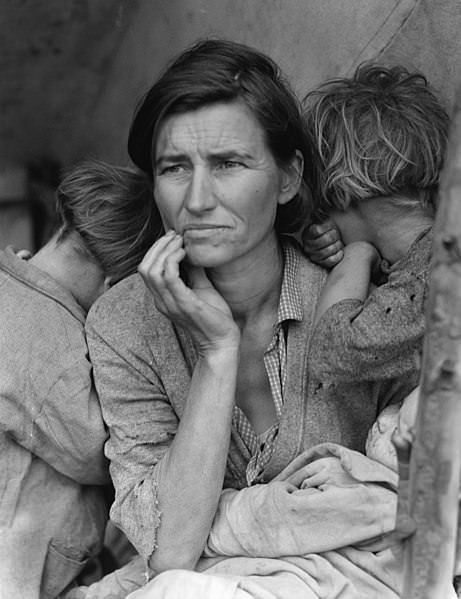
Famous For
It was in 1936 that Lange photographed the Migrant Mother, which has often been named as the most famous photograph of journalistic history. Her images were distributed to newspapers for free, helping them become symbols of Great Depression. Dorothy Lange’s style of true photography set the course for documentary photography, where emphasizing the subject and its context is the aim.
8. Edward Weston
Edward Weston, born in 1886, knew that he wanted to be a photographer from an early age, and was gifted a simple box camera by his father as a young boy. Finishing a 9-month photography course in 6 months, he moved to California and started working at the studio of Louis Mojonier.
In 1909, Weston started his own studio and became a master of the pictorial style of photography, characterized by soft-focus and blurry effects. Articles regarding his images were published in magazines like American Photography, Photo Miniature and Photo Era. However, during the 1920s, especially marked by a visit to a steel factory, he renounced Pictorialism style to focus on abstract images and sharper resolution. In fact, he was one of the founding members of Group f/64 along with Ansel Adams.

Famous For
Edward Weston’s career has ranged from portraits and nudes to landscape and still life. His ability to light the subject and generate abstract shapes and contrast is unmatched. Although he had to stop photography in 1948 because of Parkinson’s disease, his work is displayed in collections like The Museum of Modern Art in New York and the National Gallery of Art at Washington.
9. Elliot Erwitt
More a comedian than a photographer, Elliot Erwitt is one person from whom we could all learn satire, humor and sharp wit. From photographer to a director to a producer, this legend, born in 1928, has done it all.
Erwitt completed his education in photography and film-making at Los Angeles City College, and worked as a photographer’s assistant while serving in the army in the 1950s. Hired as a photographer by the Farm Security Administration, and later working as a freelancer for magazines like Life, Holiday and Look, he soon found recognition when he was invited to become a member of the photographers’ cooperative Magnum Photos.
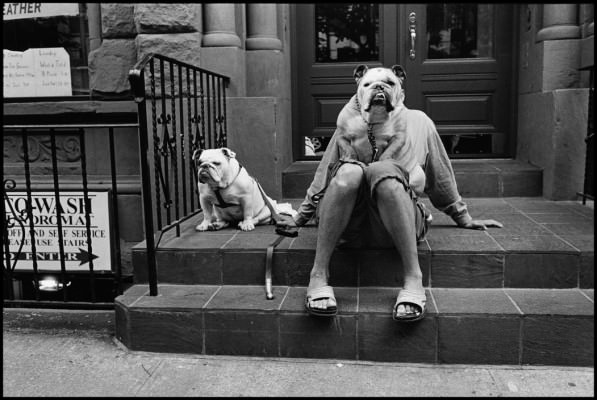
Famous For
In contrast to many photographers in this list, Elliot Erwitt’s images do not require any analysis or artsy interpretations. His talent lies in shooting the ordinary life in unusual and absurd ways, which will seem funny to all. Focusing on mundane yet engaging subjects, Erwitt continues to be a master of candid street and documentary photography, with his work now being showcased at the Smithsonian, the Museum of Modern Art and the Art Institute of Chicago.
10. Garry Winogrand
Garry Winogrand defined street photography in the 1960s and 70s, extensively capturing the life of New York City. Born on January 14th, 1928, Winogrand studied painting and photography at Columbia University, and also photojournalism at the New School for Social Reearch.
It was during his stint as a freelance photographer that he developed an eye for candid street photography, covering subjects like animals in zoos, crowds, rodeos and airports. Contrary to the style of that time, Winogrand used a 28 mm wide-angle lens, which helped him capture the energy and attitude of his subjects, and create an immersive experience for the audience.

Famous For
The biographical film Garry Winogrand: All Things are Photographable contains a short clip of Winogrand actually at work on the street. His method of bringing the camera to his eye, taking the shot, and dropping it back down without fiddling with any dials or settings — all within one second — exhibits the perfect blend of improvisation and technique.
11. Gerda Taro
The third female photographer to grace this list, Gerda Taro is a symbol for courage, sacrificing her life while in pursuit of her goals. Born as Gerta Pohorylle in Germany in 1910, the rising anti-Semitic practices under Hitler later forced her family to flee. While her mother and father attempted to reach Palestine, Taro left for Paris. Sadly, she would never get to meet her parents again.
It was in 1934 that Taro met Endre Friedmann, a fellow photojournalist with whom she invented the alias Robert Capa, a name exclusively used by Friedmann later. Taro learned photography from him, and soon the couple started taking photographs together and selling them as agents of the fictional Capa, covering events like the left-wing movements of 1930s’ France and the Spanish War.
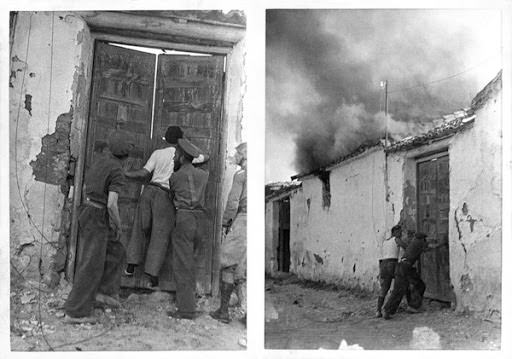
Famous For
The emotional photos Taro captured, alone, of the Valencia bombing and the Battle of Brunete in Spain are now her most celebrated. On July 25th, 1937, the vehicle she was in crashed into a tank during a retreat, making her the first woman war photographer to die on field.
12. Henri Cartier-Bresson
Born on August 22nd, 1908, Henri Cartier-Bresson was one of the fathers of modern street photography, capturing humanist images and the ordinary life through his Leica and a trusted 50 mm lens. As the eldest child of a wealthy family, he was able to pursue arts and literature quite freely.
In 1934, after having a few exhibitions to his name in places like New York, Madrid and Mexico, he met fellow photojournalist David Seymour and Robert Capa, with whom he later founded Magnum Photos. During World War II, he joined the Photo Unit of the French army, and spent 3 years as a prisoner of war, escaping only on his third attempt.

Famous For
Henri’s work as a member of Magnum Photos took him to India, China and Japan, where he covered the funeral of Mahatma Gandhi and gained worldwide recognition. Although he retired from photography in early 1970s, his philosophy of capturing the decisive moment has become the essence of street and documentary photography.
13. Imogen Cunningham
The only photographer in this list representing the field of purely botanical photography, Imogen Cunningham also has the distinction of being one of the world’s first professional female photographer. Born in 1883 in Oregon, USA, Imogen saved up $15 at the age of 18 to buy her first 4×5 view camera. She initially focused on pictorial photography and nudes, often generating controversy by using her male friend as a model, or posing for nude portraits herself.
During the 1920s, she became interested in botanical photography, creating images with so much detail that they were used by colleges and researchers for studies. After working alongside contemporaries like Lange and Weston, Imogen joined Group f/64 in 1932, exploring genres like industrial photography and the human form, especially the hands of famous artists and musicians.
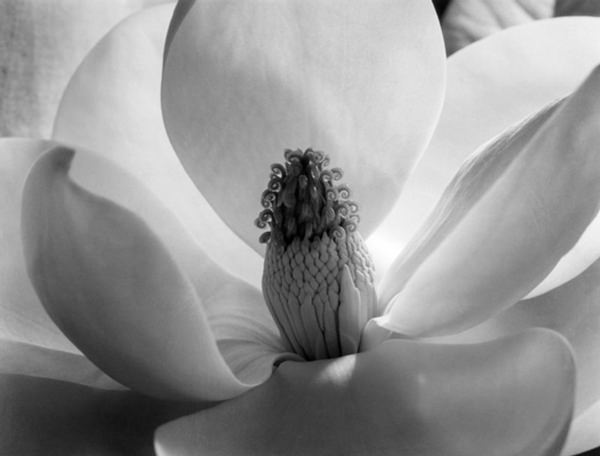
Famous For
Imogen’s most famous images are characterized by emphasis on the lines and patterns in flowers. Her abstract close-ups and exceptional use of natural light makes her a unique photographer, whose images are still used by students to learn minimalism and effective exposure.
14. Irving Penn
Irving Penn, the elder brother of acclaimed film director Arthur Penn, was born to a Russian-Jewish family on June 16th, 1917. After learning painting and graphic design under Alexey Brodovitch — the art director of Harper’s Bazaar — Penn soon became an art director himself at Saks Fifth Avenue.
It was in October 1943 that Penn’s first cover photo appeared on Vogue, for which he’ll continue working for the rest of his career. The director of Vogue, Alexander Liberman, had hired Penn as a designer for the magazine, for finalizing the layout of each issue, but also encouraged him to pursue fashion photography.
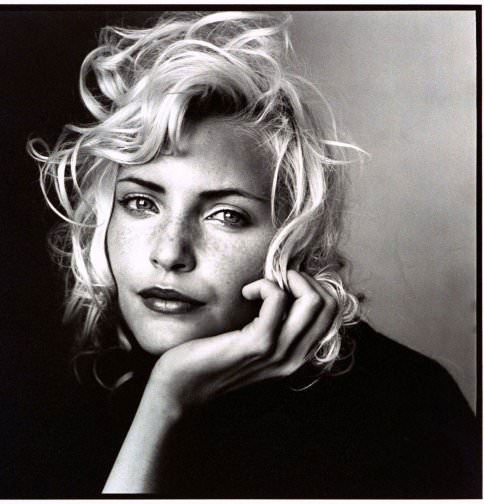
Famous For
By the 1950s, Irving Penn’s reputation for creating intimate portraits was established. Liberman himself had looked at the contact sheets of Penn and said that he has “a mind, and an eye that knew what it wanted to see.” His portrait and still life images often exhibit simplicity and a completely white background, as Penn preferred to work in the studio, where he could focus on the form of the subject.
15. Man Ray
Born as Emmanuel Radnitzky in 1890, Pennsylvania, Ray studied the works of Old Masters like Da Vinci and Rembrandt to become a professional painter, and later worked as a technical illustrator for various companies in Manhattan.
Ray’s artistic journey matured when his interest in Dadaism was sparked — an art form where nonsensical and spontaneous works are created. In July 1921, he moved to Paris, photographing personalities like Picasso and Gertrude Stein, soon becoming the only American artist part of the Surrealist movement. Ray even worked with photograms, where objects are directly placed over film and exposed, creating photos made directly with light, instead of a camera.

Famous For
Both Man Ray’s portraits and paintings are characterized by negative space, deep shadows and deliberate compositional errors, to create a feeling of chance and accident. He died in Paris in 1976, leaving behind a body of work that actually led to the founding of conceptual art itself.
16. Philippe Halsman
Philippe Halsman was born in then-Russian Riga, which is now in Latvia, and was a portrait photographer whose celebrity images are still circulated worldwide. His education was in electrical engineering, which later aided his invention of a twin-lens reflex camera with a viewfinder in-built. In 1928 Austria, the 22-year-old Halsman was tried and convicted for the murder of his father, an unfortunate result of anti-Semitism and circumstantial evidence. He was pardoned by the Austrian President in 1930.
Halsman’s career flourished in the 1930s when he moved to Paris and his sharp portraits — often closely cropped — started getting noticed. After moving to the US in 1940 with the help of Albert Einstein himself, he worked with Life magazine, creating a total of 101 cover photos. He also worked closely with Salvador Dali, publishing a series Dali’s Mustache, which contained 36 photos of his iconic mustache from different angles.
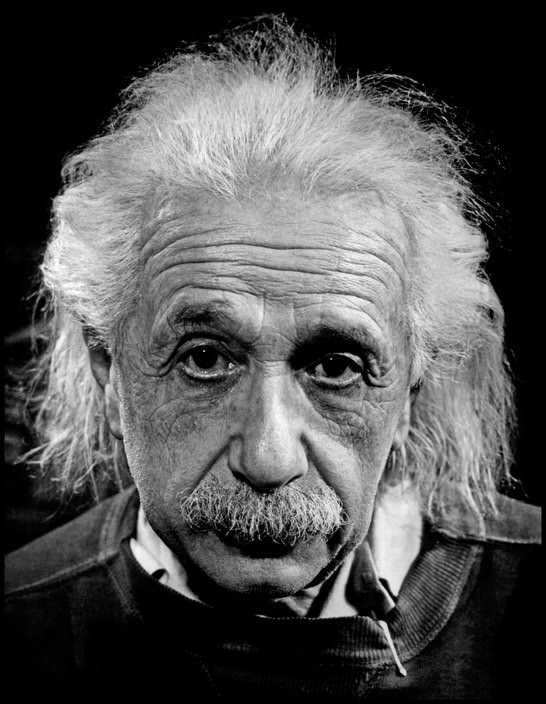
Famous For
Philippe Halsman is known for his remarkable ability to make his subjects feel comfortable, often asking them to jump for the photograph, which he said allows the “mask to fall, so that the real person behind appears.”
17. Richard Avedon
Born on May 15, 1923, in New York City, into a family running a retail dress business, Richard Avedon was to turn his interest in fashion into a career in fashion photography. Using a Kodak Box Brownie, he joined a camera club at the age of 12, often taking photos of his younger sister and the neighborhood.
While studying photography under Alexey Brodovitch, he began working as a freelance photographer for Harper’s Bazaar, and had set up his own studio by 1946. Avedon took portraits of models outdoors under natural light, showing them laughing and moving, which was in contrast with the usual trend of formal portraits. He has photographed celebrities including Marilyn Monroe, The Beatles, Audrey Hepburn and Tupac Shakur for various magazines.
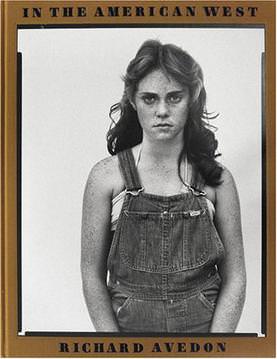
Famous For
By focusing on movement in his portraits, while having deep conversations with the models, he was able to bring out their personality. Avedon’s 1985 book In the American West is often considered his best work, containing portraits of miners, cowboys and drifters. It is used to date to show a turning point in the history of American photography.
18. Robert Capa
A name which doesn’t really exist, Robert Capa is the alias for Endre Friedmann, born on October 22nd, 1913, in Budapest. While studying in Berlin, where he worked as a darkroom assistant and a freelance photographer, the Nazi Party came to power, which forced Friedmann to flee Germany.
It was in Paris he met Gerda Taro, inventing the name Robert Capa together. Although they started publishing their photos independently, their joint coverage of the Spanish Civil War is a landmark in war photography. By late 1930s, he had published photos in Life and Picture Post, with the latter naming the 25-year-old Capa as the greatest war photographer in the world. One of his most famous images is the Death of a Loyalist Soldier, capturing a wounded soldier in battle.

Famous For
Robert Capa became well-known for his daring pursuits, most famously being the only civilian photographer at the Normandy landing of World War II, producing images now known as The Magnificent Eleven. On May 25th, 1954, Capa stepped on a land mine while photographing for Life in Indochina and lost his life.
19. Robert Frank
Born in 1924, Robert Frank was a Swiss-American photographer and filmmaker, whose book The Americans has become perhaps the single-most influential book for contemporary photography. After training under a few photographers in Switzerland, Frank moved to the US and found work as a fashion photographer at Bazaar in 1947.
Soon growing discontented with the limitations of the fashion genre, and the control of magazine editors, Frank left his job to travel and produce images for Life, Vogue, Fortune and others. He received international recognition when seven of his images were selected for the world-touring MoMA exhibition The Family of Man, a collection still in print today.
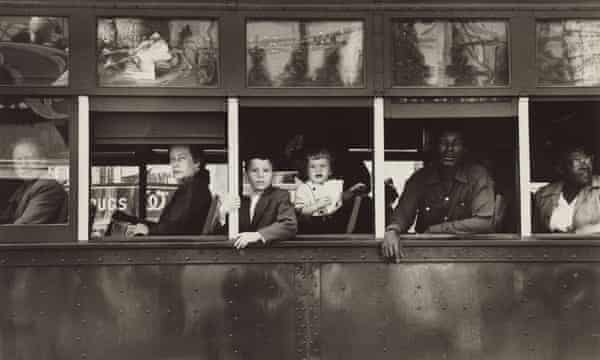
Famous For
Frank’s greatest work came in 1957 in the form of his book The Americans, containing shots from his two-year road trips across the United States, with many of them being unconventional because of their unusual focus, grain, low-lighting and cropping techniques.
20. Robert Mapplethorpe
Perhaps the most controversial photographer included in this list, Mapplethorpe was born on November 4th, 1946. After majoring the graphic arts from the Pratt Institute in Brooklyn, he began photography with a Polaroid camera, using the images for his mixed-media collages and photo collections.
In 1973, Mapplethorpe had his first solo gallery exhibition, titled Polaroids, at the Light Gallery in New York. Soon, he had acquired a medium format Hasselblad camera and begun creating album covers and commercial photos, even working for Andy Warhol’s Interview.
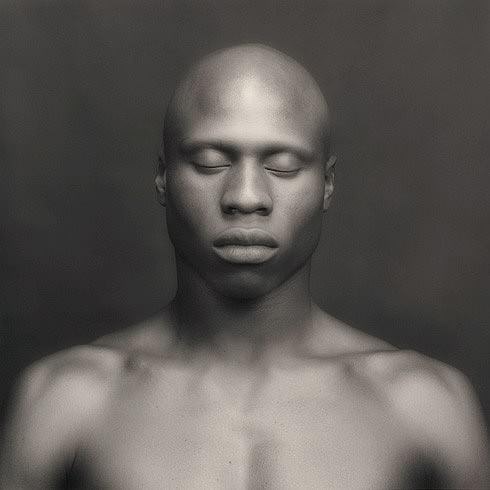
Famous For
Robert Mapplethorpe has become famous for his controversial work exploring the homosexual male culture of New York City of the 70s. In 1989, his traveling exhibition The Perfect Moment was put on display in places like Chicago and Philadelphia, sparking a debate on censorship and public funding of obscene works of art. Mapplethorpe died in 1989, at a young age of 42, due to complications from HIV.
21. Sally Mann
A photographer with no formal training in photography is in fact one of the greatest portraitists of the world. Sally Mann was born on May 1st, 1951, in the United States. After her college graduation, she worked as a photographer at Washington and Lee University, which led to her first solo exhibition at the Corcoran Gallery of Art in Washington.
In 1988, Mann published her collection At Twelve: Portraits of Young Women, aimed at capturing the confusing coming-of-age emotions of young girls. She is most widely known for her third collection Immediate Family, first exhibited in 1990 in a Chicago gallery. The book contains 65 images of Sally Mann’s own three children, often going about their daily routine nude, which Mann says was a usual habit in her family.
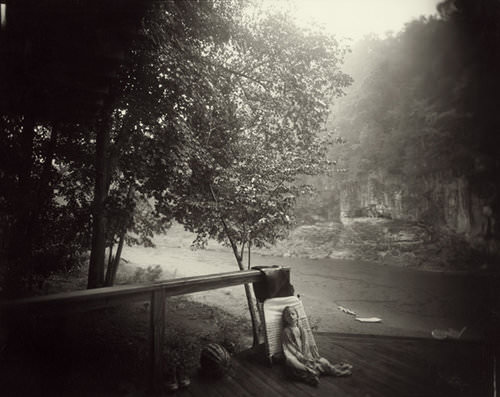
Famous For
Mann’s technique of capturing happy accidents — even while printing the negatives — leads to intimate portraits. She is noted for using imperfect lenses, allowing light leaks and color aberrations. In 2001, she was named as America’s Best Photographer by Time magazine.
22. Sebastião Salgado
Sebastião Salgado started his career in photography at the age of 30, after having completed his education in economics. It was while working as an economist for the UN International Coffee Organization and traveling to Africa that his interest in photography began.
Salgado worked for agencies like Sygma and Gamma, later joining Magnum Photos. He opened his own agency along with his wife in 1994, named Amazonas Images. By that time, Salgado had already produced influential series like Other Americas and An Uncertain Grace, focusing on the poor conditions of manual laborers. Along with his worldwide photography trips, he and his wife have actively worked on reforestation of the Atlantic Forest, having successfully converted 17,000 acres into a nature reserve.
Famous For
Salgado is known for his straightforward style of photography, emphasizing the social conditions of his subjects to raise awareness. Salgado’s work has won him many awards, including two ICP Infinity Awards for Journalism and the Erna and Victor Hasselblad Award.
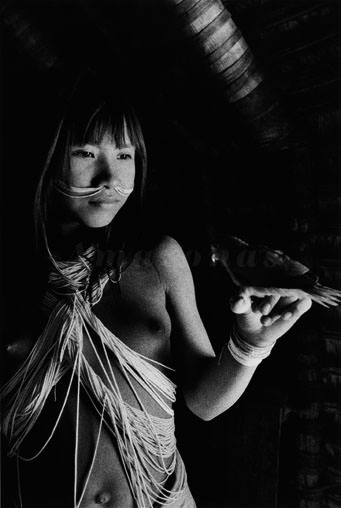
23. Steve McCurry
A documentary and war photographer to rival Robert Capa, Steve McCurry was born on April 23rd, 1950, in Philadelphia. After working as a photographer for a college newspaper, he traveled to India, making the first of his many trips to the country. Exploring the country with only a bag of clothes and film, McCurry joined a group of Afghani refugees and was smuggled into Afghanistan right before the Soviet invasion.
Emerging with a full-grown beard and rolls of film hidden inside his socks and turban, McCurry became one of the first photographers to show the brutality of the Soviet-Afghan conflict. His work earned him the Robert Capa Gold Medal for Best Photographic Reporting from Abroad.
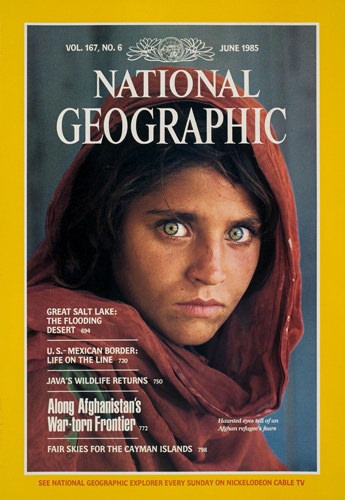
Famous For
Apart from covering various conflicts including the Iran-Iraq War and the Lebanon Civil War, McCurry is famous for taking the 1984 image Afghan Girl, a portrait which is known as the most recognizable photo in the history of National Geographic.
24. W. Eugene Smith
William Eugene Smith was born in 1918 in Kansas, USA, and rose to become the definitive leader of the photo essay form, which had been popularized by André Kertész. By the time Eugene was 15 years old, he had already published photos in local newspapers. Around 1938, he found work as a photographer at Newsweek, although his rigid perfectionism and refusal to use medium-format cameras led to him being fired, and he began to work for Life.
Smith photographed the American offensive in World War II, including the Battle of Iwo Jima and Okinawa. His injuries during the excursion were so serious that he had to undergo multiple surgeries during the course of 2 years.

Famous For
Eugene Smith’s photo essays on Maude Callen, a black midwife nurse and Dr. Albert Schweitzer in West Africa, and a profile on the city of Pittsburgh are some of his best works. His series on the effects of mercury poisoning in a Japanese village drew worldwide attention, and has earned him the praise of “developing photo essay to its ultimate form.”
25. Weegee
Born Asher Fellig in June, 1899, in Ukraine, Asher was renamed to Arthur when his family moved to New York. Working as an assistant for a commercial photographer and then as a darkroom technician, Arthur started his own journey of photojournalism in 1935 by following the police with a camera. In 1938, he was the only New York freelancer to have a permit for an actual portable police radio.
Often the first one at the scene of crime, his sensational photos were used by newspapers like the Daily News, Sun and New York Post. Although the origin is uncertain, rumors have it that his Ouija-board-like ability to predict crime scenes led to the phonetic nickname Weegee. Soon, his photographs began appearing in MoMA exhibitions, Life and collections by curator Edward Steichen, and his 1945 book Naked City even inspired a movie, eventually also inspiring Jake Gyllenhaal’s Nightcrawler.
Famous For
Weegee’s technique was not very unique, generally using the standard journalistic settings of f/16, a shutter speed of 1/200 and flashbulbs. Where his true ability lay was in selecting the events to capture, combining his own notoriety with dramatic crime photos.
26. William Eggleston
One of the few color photographers on this list, William Eggleston is credited with increasing the recognition of color photography in the 70s. Born on July 27th, 1939, in Memphis, he was different from most of the students of his boarding school, not taking up sports and hunting as hobbies. Although he started with black and white photography, inspired by the works of Robert Frank and Cartier-Bresson, his interest in color grew in the 1960s.
Eggleston’s real journey began when he began using the dye-transfer printing process, which was ignored by serious photographers as something suitable only for advertisements. One of his best works, The Red Ceiling, was created by the same process, and led to the MoMA showcasing the Color Photographs exhibition in 1976. It was after 30 years that a solo photographer’s color images were shown there.
Famous For
Eggleston’s work is mature, focusing on ordinary things like bottles, gas stations and broken trucks, which most photographers would ignore. As his famous book The Democratic Forest shows, Eggleston finds beauty in the complexity of the ordinary world.
27. Yousef Karsh
Yousef Karsh of Ottawa was born in 1908, in Turkey, and grew up during the Armenian Genocide. Forced to flee their home in 1922, Karsh was sent away to Canada to live with his uncle, who became his photography teacher and mentor.
For three years, Karsh worked in Boston under portrait photographer John Garo, who introduced him to lighting techniques. By the late 1930s, he had a well-established studio and had photographed the meeting between President Roosevelt and Canadian Prime Minister Mackenzie King. Since then, and up to his retirement in 1992, Karsh has captured portraits of politicians and celebrities like Walt Disney, Grace Kelly and even Einstein, and had his photos published on the cover of Life more than 20 times.
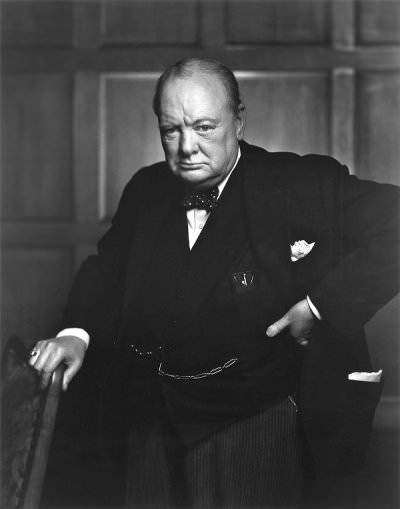
Famous For
Yousef Karsh’s most well-known image is The Roaring Lion, an intimidating 1941 portrait of Churchill, employing dramatic lighting. His technical mastery of camera and lighting techniques put the subject on a pedestal, and his photos are now on permanent display at places like the Met, Museum of Modern Art and London’s National Portrait Gallery.
Conclusion
27 names, 27 journeys and 27 different ways of getting inspired.
The point here is not to memorize names and dates of birth, but to recognize that there is no one route to professional photography and creating amazing images. Photography is what you want it to be, and there are no rules. From black and white portraits to grainy still-life photos, these photographers found beauty everywhere — kept photos interesting — sometimes without even any training.

